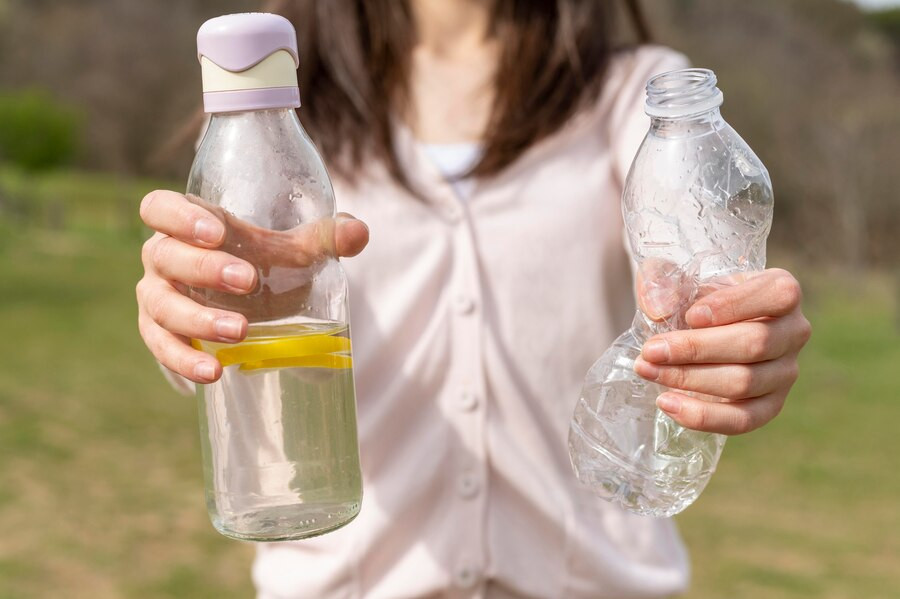Pada beberapa kemasan plastik seperti botol air minum, galon, atau kotak bekal plastik biasanya tertera label "BPA free". Label ini digunakan untuk menunjukkan bahwa kemasan tersebut tidak mengandung BPA yang biasanya digunakan sebagai salah satu bahan dalam produksi plastik.
Sebenarnya apa maksud dari "BPA free" dan mengapa perlu menggunakan produk berlabel BPA free?
Apa itu BPA dan BPA Free?
Bisphenol A atau biasa disingkat BPA adalah senyawa kimia yang digunakan dalam pembuatan polikarbonat dan resin epoksi. Polikarbonat digunakan untuk membuat berbagai produk seperti botol minuman, alat makan, peralatan dan peralatan elektronik. Sedangkan resin epoksi digunakan sebagai pelapis dalam makanan kaleng dan produk-produk lainnya.
BPA telah menjadi perhatian karena potensi efeknya terhadap kesehatan manusia. Ada kekhawatiran bahwa menggunakan produk plastik akan membuat BPA terlepas dan masuk ke dalam makanan atau minuman, terutama saat terpapar panas atau cairan asam.
Baca Juga: Bahaya Kandungan BPA Pada Botol Air Minum
Paparan tinggi terhadap BPA telah dikaitkan dengan gangguan hormonal, perkembangan reproduksi yang tidak normal, dan masalah kesehatan lainnya.
Apabila suatu produk berlabel "BPA free" maka, produk tersebut tidak mengandung BPA. Istilah ini sering digunakan pada produk botol plastik maupun kaleng. Istilah ini sangat penting karena dapat memberikan rasa lebih aman bagi konsumen yang ingin mengurangi paparan BPA dalam kehidupan sehari-hari.
Mengapa Perlu Menggunakan Produk Berlabel BPA Free?
Ada beberapa alasan mengapa banyak orang memilih menggunakan produk berlabel "BPA free", di antaranya:
Gangguan hormon
Salah satu alasan utama mengapa ingin menghindari BPA adalah karena potensi negatif terhadap kesehatan hormon. BPA dapat bertindak seperti hormon dan mengganggu sistem endokrin. Ini dapat menyebabkan masalah seperti gangguan reproduksi, gangguan perkembangan pada anak-anak, dan masalah kesehatan lain terkait hormon.
Paparan melalui makanan dan minuman
BPA dapat meresap ke dalam makanan dan minuman dari wadah plastik, terutama saat plastik terpapar panas. Walaupun BPA tidak terlihat, tetapi BPA bisa masuk ke dalam tubuh melalui penggunaan kemasan plastik yang terkena panas.
Baca Juga: Tips Memilih Botol Minum Plastik yang Aman untuk Kesehatan
Risiko kesehatan
Meskipun risiko kesehatan yang pasti dari paparan BPA masih dalam penelitian, beberapa studi pada hewan menunjukkan potensi dampak negatif pada kesehatan. Beberapa efek yang telah diteliti meliputi risiko kanker, gangguan metabolisme, dan gangguan sistem saraf.
Untuk mengurangi paparan BPA, selain memilih kemasan berlabel BPA free, Anda mungkin perlu mempertimbangkan pilihan produk lain seperti stainless steel, keramik atau kaca. Hindari memanaskan makanan menggunakan wadah plastik, terutama saat Anda tidak tahu ada kandungan BPA atau tidak di dalamnya.
Memiliki pertanyaan lain terkait BPA? Anda bisa berkonsultasi dengan dokter kami melalui aplikasi Ai Care yang bisa diunduh di App Store atau Play Store.
Mau tahu tips dan trik kesehatan, pertolongan pertama, dan home remedies lainnya? Cek di sini, ya!
- dr Nadia Opmalina
Food Standars Agency (2024). BPA in plastic. Available from: https://www.food.gov.uk/safety-hygiene/bpa-in-plastic
Mayo Clinic (2023). Brent A. Bauer, M.D.. Available from: https://www.mayoclinic.org/healthy-lifestyle/nutrition-and-healthy-eating/expert-answers/bpa/faq-20058331
SaVanna Shoemaker, MS, RDN, LD and Alina Petre, MS, RD (NL) (2024). What Is BPA? Should I Be Concerned About It?. Available from: https://www.healthline.com/nutrition/what-is-bpa
WebMD (2024). The Facts About Bisphenol A. Available from: https://www.webmd.com/children/bpa
National Institute of Environmental Health Sciences (2023). Bisphenol A (BPA). Available from: https://www.niehs.nih.gov/health/topics/agents/sya-bpa
Silent Spring Institute. 6 Simple Steps to Avoid BPA and Phthalates in Food. Available from: https://www.mbcc.org/6%20steps%20to%20avoid%20BPA.pdf












